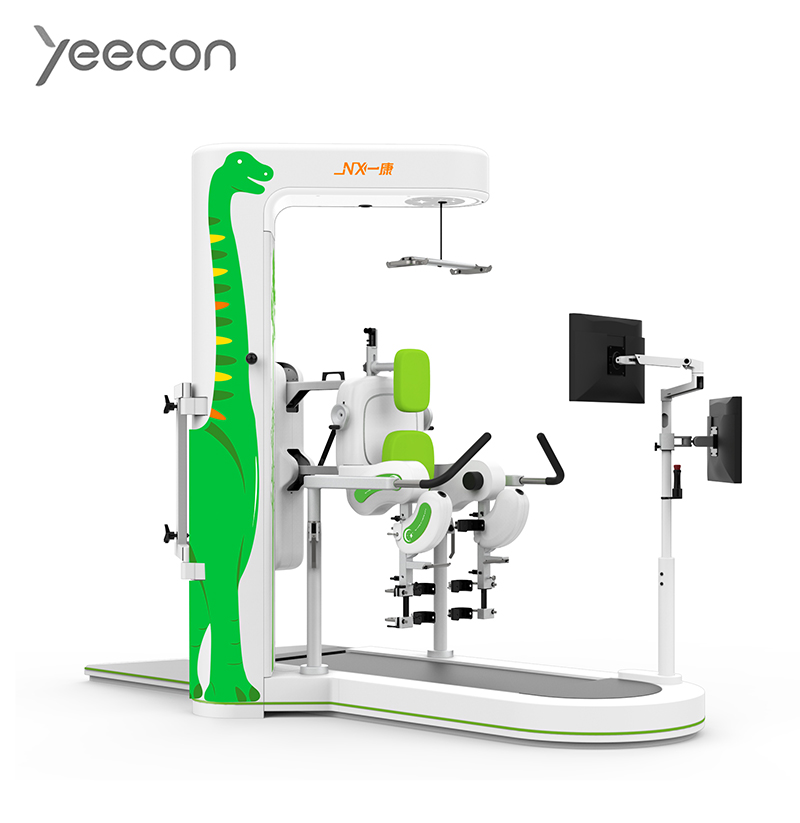Cerebral palsy (CP) is a non-progressive syndrome resulting from various causes that lead to non-progressive brain damage during the early stages of brain development, either before birth or within the first month after birth. It is characterized by central motor impairments and abnormal postures and can be accompanied by intellectual disabilities, epilepsy, sensory impairments, speech disorders, and behavioral abnormalities. CP is one of the major diseases causing motor disabilities in children.
CP can cause significant impairments in the motor functions of affected children and is a highly disabling condition. Without early intervention, it can have a severe impact on the quality of life in the future.
For infants in the early salvage rehabilitative phase, the use of exoskeletons in standing and walking simulation training can improve physical development, facilitate motor skill acquisition, and reduce the degree of impairment. For children in the intervention rehabilitative phase, exoskeleton-assisted gait training can correct abnormal postures, promote the development of a normal gait pattern, reduce musculoskeletal deformities, improve mobility, enhance psychological well-being, and further facilitate the development of social skills in children.
Why use rehabilitation robots?
Conventional rehabilitation methods have limitations:
1. Difficulty in walking function training: Walking training is a targeted and task-oriented rehabilitation method. The acquisition of walking skills is crucial for physical and intellectual development in preschool children. However, early walking training is challenging due to the physical limitations of children with CP and the lack of effective specialized assistive devices.
2. Limited active participation of children in therapy: Due to the incomplete physical and mental development of children with CP, their active participation in therapy is often limited, and they may become easily frustrated. Some conventional rehabilitation treatments are monotonous and lack fun and entertainment, making it difficult to tap into the children’s potential, stimulate their motivation, and significantly affect the progress and effectiveness of rehabilitation therapy.
3. High dependence on therapists’ manpower and experience: Current training methods rely on one-on-one (or even one-on-many) assistance from rehabilitation therapists. Since rehabilitation training requires sufficient intensity and repetition, it places a significant physical burden on therapists. In conventional rehabilitation training, factors such as the force exerted, range of motion, and repetition often rely on the therapist’s experience, making the therapist’s skill level and experience critical factors affecting the effectiveness of rehabilitation therapy.
4. Difficulty in standardizing rehabilitation training: Conventional rehabilitation heavily relies on the physical labor of therapists, making it challenging to standardize and precisely control the training process. Different therapists implementing the same training program can lead to variations in training quality. Factors such as the therapist’s physical and mental condition can lead to inconsistent training quality.
Therefore, we have developed robotics specifically designed for pediatric lower limb rehabilitation.
Our advantages:
1. Quantitative rehabilitation assessment: Rehabilitation robotics technology can quantitatively assess children’s motor function through sensors and data analysis. These assessment results serve as objective indicators of rehabilitation progress, helping doctors and therapists understand the child’s rehabilitation status, adjust treatment plans, and develop more effective rehabilitation strategies.
2. Facilitating motor recovery: Lower limb rehabilitation robots provide support and assistance, helping children with CP engage in gait training and motor recovery. By providing stability and correcting gait patterns, the robots improve posture control, balance, and coordination, facilitating motor recovery.
3. Increased training volume and intensity: Rehabilitation robots assist children in increasing the training volume and intensity. They offer customized support and guidance, providing the necessary assistance during rehabilitation to enable children to engage in more repetitions, strengthen muscle activity and neural connections, and promote rehabilitation progress.
4. Personalized rehabilitation plans: Rehabilitation robotics technology allows for the development of personalized rehabilitation plans based on specific conditions. Robots can dynamically adjust the training based on a child’s muscle strength, balance ability, and gait characteristics, providing tailored rehabilitation training that effectively promotes progress.
5. Real-time feedback and guidance: Rehabilitation robots provide real-time motion data and guidance through sensors and feedback systems. Children can adjust their posture, gait, and movement patterns based on the robot’s feedback, enhancing the accuracy and effectiveness of their movements and accelerating the rehabilitation process.
6. Diverse and engaging interactive games: Creating immersive training environments where children can participate in games helps enhance their interaction with intelligent technology. This increases the enjoyment and effectiveness of the training as well as the active participation of the children in rehabilitation therapy.
Read more: The Application of Isokinetic Technology in Clinical Practice
Post time: Dec-21-2023








